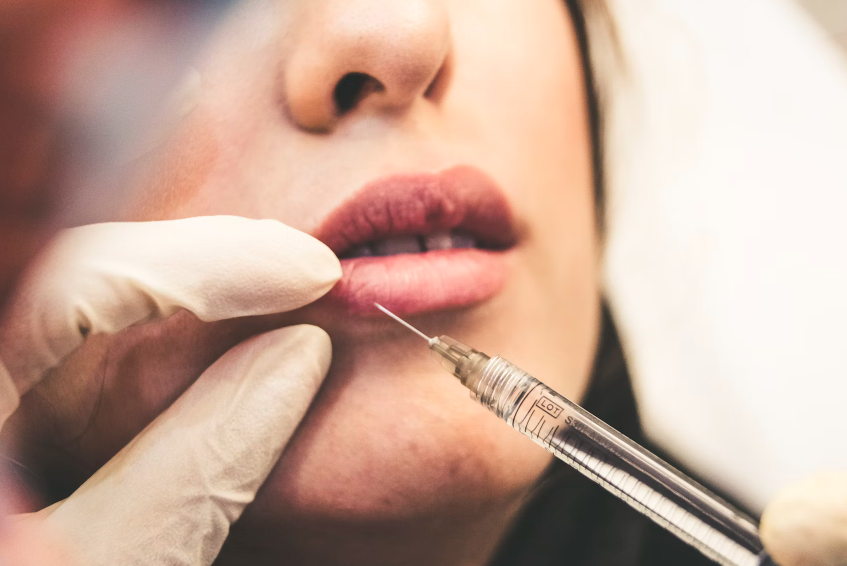
Achieving youthful, glowing skin is a desire for many. With advances in cosmetic dermatology, dermal fillers have emerged as a popular solution to this quest. This blog post aims to provide a comprehensive guide about dermal fillers, from understanding what they are to exploring their benefits and considerations.
What Are Dermal Fillers?
Dermal fillers are injectable substances designed to restore volume, smooth lines, and enhance facial contours. These fillers work by plumping up the targeted area under the skin, making it look fuller and more youthful. They are often made from hyaluronic acid, a naturally occurring substance in the skin, which helps maintain hydration and elasticity.
Dermal fillers are commonly used to treat wrinkles, fine lines, and hollows under the eyes. They can also enhance lips, cheeks, and jawlines, providing a more defined and rejuvenated appearance. Unlike Botox, which relaxes facial muscles, dermal fillers address volume loss and structural changes in the skin.
Types of Dermal Fillers
Various types of dermal fillers are available, each suited for different purposes. Hyaluronic acid fillers, like Juvederm and Restylane, are popular for their natural-looking results and versatility. These fillers are often used for lip enhancement, cheek augmentation, and smoothing fine lines.
Calcium hydroxyapatite, found in Radiesse, is another type of filler that stimulates collagen production. This makes it ideal for deeper wrinkles and facial contouring. Poly-L-lactic acid, used in Sculptra, also promotes collagen growth and is used for treating facial volume loss over time.
For longer-lasting results, polymethylmethacrylate (PMMA) fillers like Bellafill contain tiny beads that provide structural support to the skin. These fillers are often used for deep wrinkles and acne scars.
Benefits of Dermal Fillers
Dermal fillers offer numerous benefits, making them a popular choice in cosmetic dermatology. One of the main advantages is their ability to provide immediate results. After just one treatment, patients often notice a significant improvement in their appearance.
Another benefit is the minimally invasive nature of the procedure. Unlike surgical options, dermal fillers require no downtime, allowing patients to resume their daily activities almost immediately. This convenience makes them an attractive option for those with busy lifestyles.
Additionally, dermal fillers can be customized to meet individual needs. Depending on the desired outcome, different types and amounts of fillers can be used to achieve a natural and balanced look. This personalized approach ensures that each patient receives the best possible results.
The Procedure
Understanding the procedure for dermal fillers can help alleviate any concerns and prepare for the treatment. The process begins with a consultation at a clinic, such as Timeless Aesthetic Injections. At the consultation, a qualified practitioner will assess the patient’s needs and discuss their goals.
During the treatment, the practitioner will clean the targeted area and may apply a numbing cream to minimize discomfort. The filler is then injected into the skin using a fine needle. The entire procedure typically takes less than an hour, depending on the areas being treated.
After the injections, the practitioner may gently massage the treated areas to ensure even distribution of the filler. Patients can expect some swelling and redness, which usually subsides within a few days. Following post-treatment care instructions is crucial for optimal results.
Choosing the Right Practitioner
Selecting the right practitioner for dermal fillers is essential for achieving safe and satisfactory results. It’s important to choose a qualified and experienced professional who specializes in cosmetic dermatology or plastic surgery.
Before committing to a practitioner, research their credentials, read reviews, and ask for before-and-after photos of their previous work. A reputable practitioner will take the time to understand your goals, answer your questions, and provide realistic expectations.
During the consultation, discuss any medical conditions or allergies you have, as these can affect the treatment. A skilled practitioner will consider these factors and tailor the procedure to your specific needs.
Potential Side Effects
While dermal fillers are generally safe, it’s important to be aware of potential side effects. Common side effects include redness, swelling, and bruising at the injection site. These are usually mild and resolve within a few days.
In rare cases, more serious side effects can occur, such as infection, allergic reactions, or lumps under the skin. Choosing a qualified practitioner and following post-treatment care instructions can help minimize these risks.
If you experience any unusual symptoms or prolonged discomfort after the treatment, contact your practitioner immediately. Prompt attention to any issues can prevent complications and ensure a smooth recovery.
Longevity of Results
The longevity of dermal filler results varies depending on the type of filler used and the area treated. Hyaluronic acid fillers typically last between six months to a year, while calcium hydroxylapatite and poly-L-lactic acid fillers can last up to two years.
Factors such as age, lifestyle, and skin type can also influence how long the results last. Regular maintenance treatments can help prolong the effects and keep your skin looking youthful and refreshed.
Discussing your expectations with your practitioner will give you a better understanding of the longevity of your results and how to maintain them over time.
Combining Treatments
Dermal fillers can be combined with other cosmetic treatments for enhanced results. For example, combining fillers with Botox can address both dynamic wrinkles (caused by muscle movements) and static wrinkles (caused by volume loss).
Other treatments, such as chemical peels, microdermabrasion, and laser therapy, can complement the effects of dermal fillers by improving skin texture and tone. Consulting with your practitioner about combination treatments can help you achieve a comprehensive rejuvenation plan.
Combining treatments can also provide a more harmonious and balanced look, enhancing overall facial aesthetics and boosting confidence.
Post-Treatment Care
Following proper post-treatment care is essential for achieving the best results and minimizing any potential side effects. After the treatment, avoid touching or rubbing the treated areas to prevent the filler from moving.
Avoid strenuous activities, excessive sun exposure, and alcohol consumption for at least 24 hours after the procedure. Applying a cold pack to the treated areas can help reduce swelling and discomfort.
Your practitioner will provide specific post-treatment care instructions based on your individual needs. Following these guidelines ensures a smooth recovery and optimal results.
Dermal fillers offer a safe and effective solution for individuals looking to enhance their appearance and achieve youthful, radiant skin. With various types of fillers available, personalized treatment plans, and minimal downtime, these treatments have become a popular choice in cosmetic dermatology.


